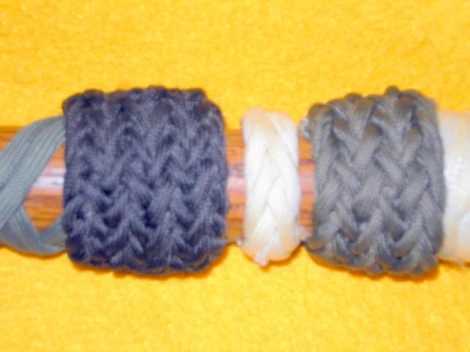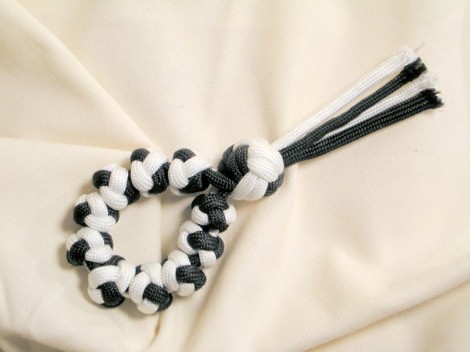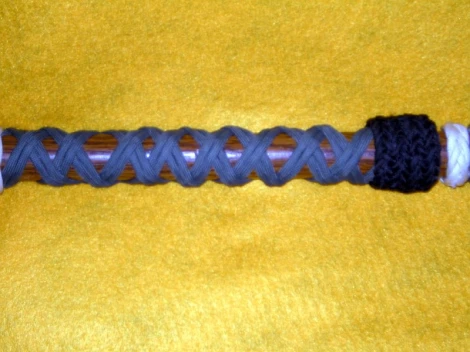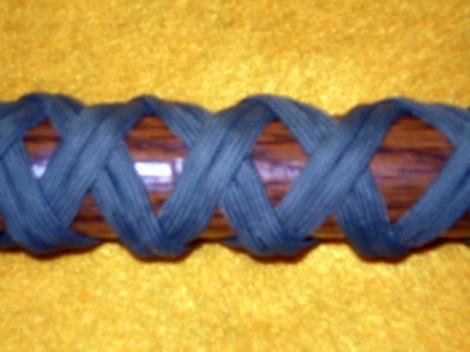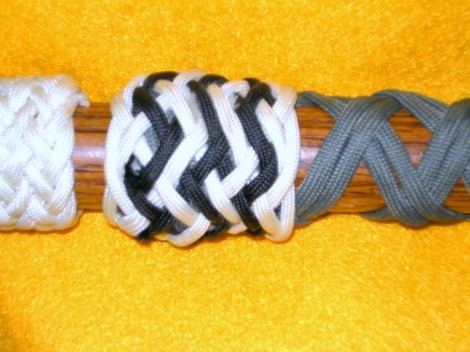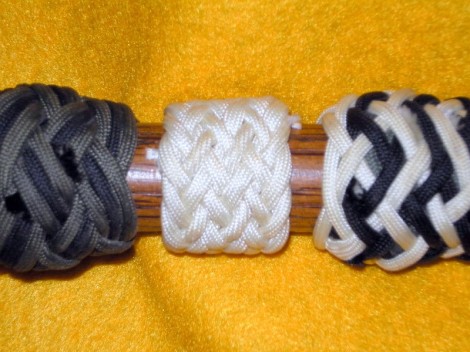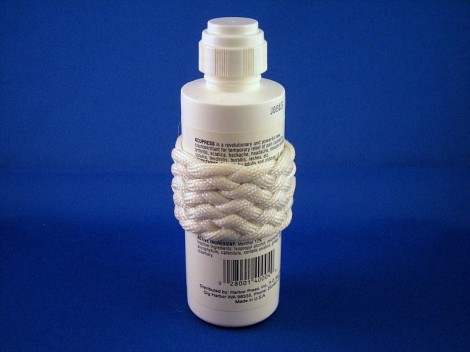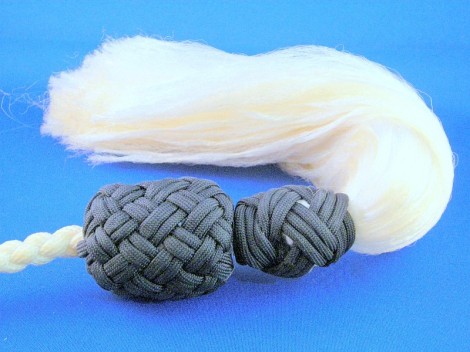The knot on the left in this picture is dressing the end of the 11 Lead X 2 Bight Turk’s Head in Stick post #4. Like most of my knots, it is tied in paracord, this time in black. I don’t remember and can’t puzzle out the Leads and Bights on this Gaucho knot. It must have been somewhere in the 28 thru 32 Bight and maybe 15 thru 17 Lead — either the picture or my eyes are too fuzzy to clarify this any further. Originally this knot was a little better formed than the picture shows, but wear and reworking have tightened it out of shape.
The center knot is done in white utility cord and is a Spanish Ring knot. Just guessing, it was probably based on a 3 Lead X 7 Bight Turk’s Head before the interweave. The ends have started to pull out and fray — this was one of the knots that convinced me that it was time for surgery.
The knot on the right is a Gaucho interweave done in greenish paracord. I am either having a hard day or these pictures are fuzzier than the others in this set. Again, I can’t make out the count on this knot, and my memory is duller than my sight.
You can see the wood between the knots. This is because of the aesthetic influence of My Lady Rose. I’m kind of getting used to it now. In my early days of learning to knot, painted coachwhipping was used to cover the entire rail. It took the place of other finishes and so had to provide protection from the sea — as well as a firm hand-hold and/or any improvement in looks it provided. Now that I live inland, it isn’t necessary to be so thorough in providing extensive protection — everything but the oil finish is for looks.
Thank you for coming by my site. We are now about half way up the stick and still climbing. Come back again; some of the better knots lie ahead.
Yours:
William
